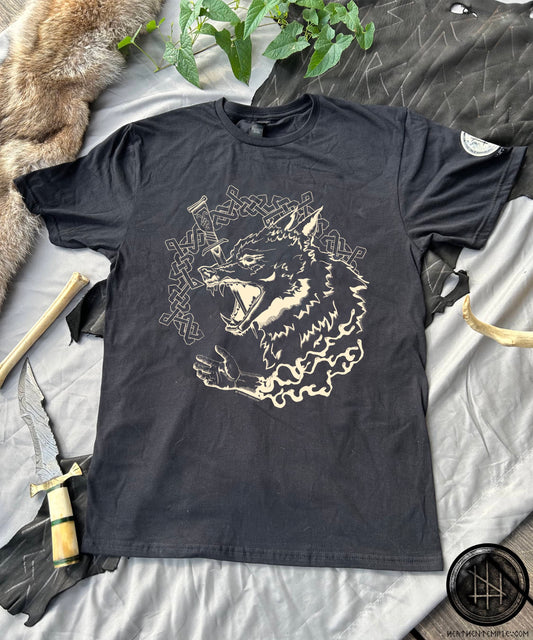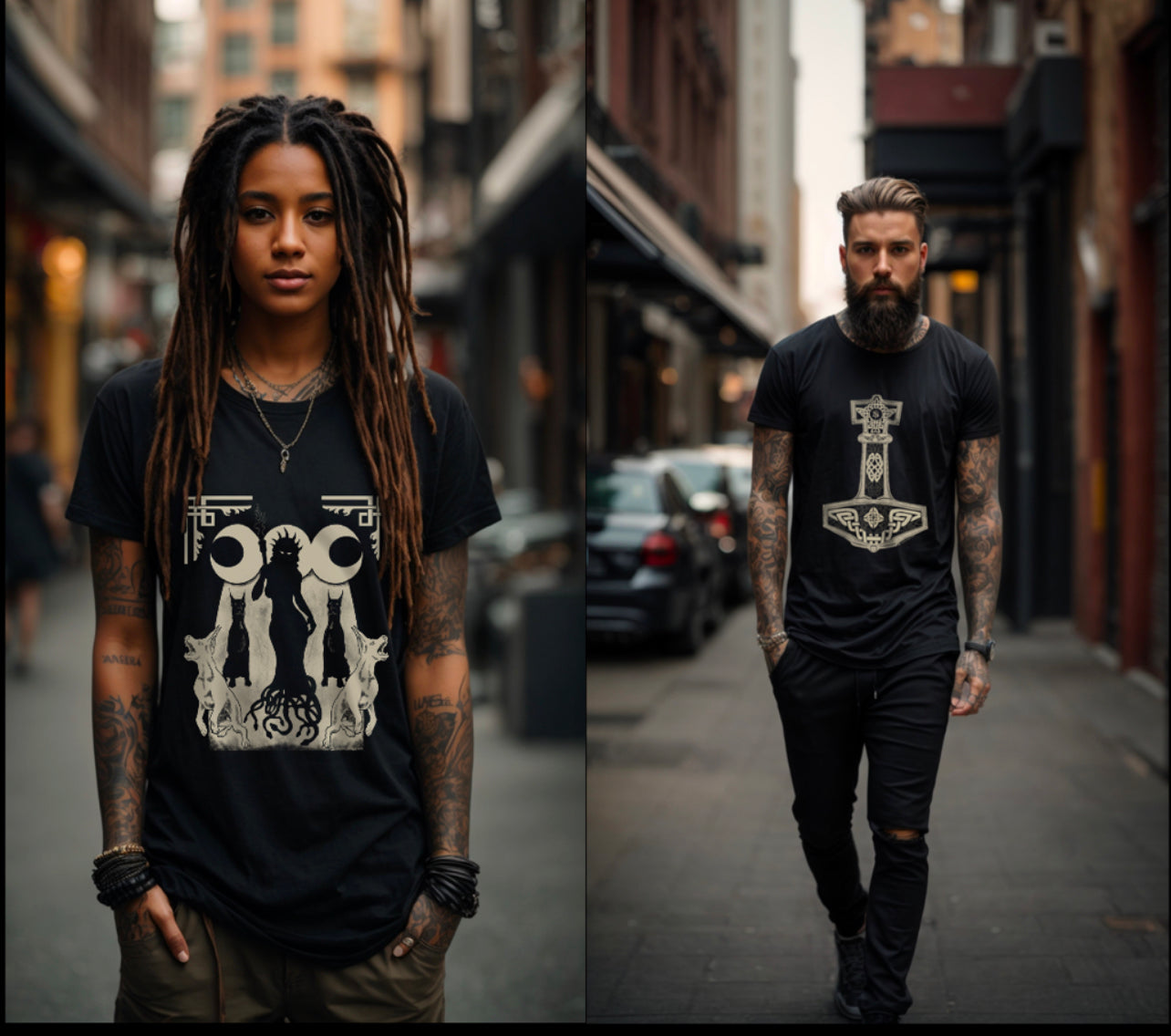Exploring the Vargr in Norse Mythology: Wolves, Lycanthropy, and the Wild Forces of Chaos
Norse mythology is a complex web of gods, giants, mythical creatures, and powerful symbols that reflect the ancient Scandinavian worldview. Among these symbols, the **Vargr**—the wolf—occupies a particularly important and multifaceted role. Far more than just a predatory animal, the Vargr in Norse culture embodies the wild, untamed aspects of nature, the dangerous fringes of society, and the chaotic forces that constantly threaten the established order. This article explores the intricate role of the Vargr in Norse mythology, its connection to lycanthropy, and how these ancient beliefs have shaped modern perceptions of werewolves and the symbolic significance of wolves.
What is Vargr in Norse Mythology?
The term "Vargr" in Norse mythology is laden with deep meaning. On a basic level, it translates to "wolf," but this translation only scratches the surface. In Old Norse, "Vargr" not only referred to wolves but also carried the connotation of an outlaw, someone who was cast out of society and forced to live on the fringes, much like a wolf wandering the wilderness. This dual meaning reflects how the Norse people viewed both wolves and outlaws as beings that existed beyond the bounds of civilization—dangerous, unpredictable, and capable of bringing about chaos.
Wolves in Norse mythology are more than just animals; they are intertwined with the fate of the cosmos itself. Two of the most significant wolves in Norse lore are **Hati** and **Sköll**, the offspring of the giant wolf **Fenrir**. Hati and Sköll are fated to chase the sun and the moon across the sky, and their eventual success in catching and devouring these celestial bodies will signal the beginning of Ragnarök, the end of the world. Fenrir, their father, is perhaps the most infamous Vargr. A colossal wolf, Fenrir is prophesied to kill Odin, the Allfather, during Ragnarök. The gods, knowing the danger Fenrir posed, sought to bind him with a magical chain called Gleipnir, but the prophecy foretold that Fenrir would break free when the end times approached.
The Vargr, therefore, is not merely a wolf; it symbolizes the existential threat that chaos poses to the orderly world. In a society where survival often depended on maintaining a delicate balance with the natural world, the Vargr represented the wild forces of nature that could not be tamed or controlled. The fear and respect that the Norse had for these creatures are evident in the way they are portrayed in their myths—powerful beings that could bring about the end of the world, yet also revered as symbols of strength and independence.
What is Warg?
The term "Warg" is closely related to "Vargr" and is found in Old English and Old High German, where it also means "wolf." However, "Warg" carried an additional connotation as a strangler or choker—emphasizing the lethal danger these animals posed. This duality in meaning highlights the deep-seated fear and respect that wolves commanded across ancient Germanic societies.
In modern culture, the term "Warg" has taken on a new life, particularly through its use in fantasy literature. J.R.R. Tolkien, for example, popularized the term in his works, where Wargs are depicted as large, malevolent wolves that ally with orcs and other dark forces. These Wargs are not just animals but are imbued with supernatural evil, making them akin to demonic entities. Tolkien’s interpretation of Wargs has since influenced other works of fantasy, where the term is used to denote cursed or monstrous wolves. This evolution of the term from a historical reference to wolves to a specific type of demonic creature reflects the enduring power of the Vargr/Warg archetype as a symbol of both the majesty and terror of nature.
Vargr and Lycanthropy
The concept of lycanthropy—the ability or curse of transforming into a wolf—finds strong resonance in Norse mythology, although the Norse did not have a specific term for it as we understand today. The idea of humans transforming into wolves is a recurring theme in Norse myths, often associated with warriors who could take on the characteristics of wolves to harness their power. These warriors, known as **úlfrhédnar** or "wolf warriors," were similar to berserkers—elite fighters who would enter a trance-like, frenzied state during battle, believed to channel the strength and ferocity of the wolf.
One of the most famous examples of lycanthropy in Norse mythology is found in the **Völsunga Saga**, a legendary Norse epic. The saga tells the story of Sigmundr and his son Sinfjötli, who discover magical wolf pelts that transform them into wolves. For a period of ten days, they roam the forest as wolves, living and hunting like wild animals. These pelts, which could only be removed after this set period, gave them the strength, speed, and ferocity of wolves, illustrating the Norse fascination with the idea of transformation and the blending of human and animal characteristics. This tale serves as an early example of the werewolf myth that would later permeate European folklore.
The úlfrhédnar warriors also provide insight into how the Norse viewed the transformation between man and beast. By donning the skin of a wolf, these warriors symbolically—and perhaps literally—took on the power of the animal. This concept of "becoming the beast" is a precursor to the modern notion of lycanthropy, where a person physically transforms into a wolf. The Norse viewed this transformation not as a curse but as a powerful gift, an ability to transcend human limitations and tap into the primal power of the wolf.
As Norse mythology evolved and later interacted with Christian beliefs and the folklore of other European cultures, the idea of lycanthropy took on darker connotations. In medieval Europe, werewolves became increasingly associated with the idea of a curse or divine punishment. This shift is evident in the way werewolves are depicted in later medieval and Renaissance literature, where they are often portrayed as monstrous figures, cursed to transform into wolves as a result of sin or witchcraft. This transformation from revered warrior to cursed beast mirrors the broader shift in how wolves were perceived—from creatures of awe and reverence to symbols of fear and darkness.
What is the Norse Word for Demon Wolf?
In Norse mythology, the term "Vargr" can also be interpreted as a "demon wolf," especially when considering its dual meaning as both wolf and outlaw. The figure of Fenrir, in particular, embodies the concept of a demon wolf in Norse lore. Fenrir is not just a wolf; he is a monstrous being whose very existence threatens the order of the cosmos. His birth, along with his siblings—the Midgard Serpent and Hel—was seen as a dire omen by the gods. Despite their attempts to bind him, the prophecy of Ragnarök foretold that Fenrir would break free and bring about the destruction of the world by killing Odin.
Fenrir's offspring, such as Hati and Sköll, continue this legacy of destruction. These wolves are fated to chase the sun and moon across the sky, and their eventual success in catching these celestial bodies will signal the onset of Ragnarök. This portrayal of wolves as harbingers of doom aligns closely with the concept of a demon wolf—a creature whose nature is inherently tied to chaos and destruction.
Other wolves in Norse mythology also carry demonic attributes. **Garm**, the hound who guards the entrance to Hel, is another example. While not always described explicitly as a wolf, Garm is often considered a wolf-like creature. His role as the guardian of the realm of the dead, especially those who did not die in battle and were thus not taken to Valhalla, imbues him with an aura of malevolence. Garm is a sentinel of death and the underworld, further cementing the association of wolves with dark, otherworldly forces.
The use of the term "Vargr" in this context highlights the fluidity of meanings in Old Norse language and mythology. Wolves could be both protectors and destroyers, symbols of wild nature and chaotic forces that threatened human civilization. In many ways, the Vargr was the Norse version of a demon wolf—a creature that existed on the boundary between the natural and supernatural, the human and the inhuman.
Is Fenrir a Vargr or a Werewolf?
Fenrir, as the archetypal Vargr, embodies both the wolf and the outlaw, representing the wild and untamed forces of nature that stand in opposition to the gods. He is not a werewolf in the traditional sense—he is not a man cursed to become a wolf—but his story shares themes with lycanthropy. Both involve a transformation, either literal or symbolic, that represents a crossing of boundaries: from man to beast, from order to chaos, from civilization to wilderness.
Fenrir's role in Ragnarök, where he is destined to kill Odin, underscores his position as a Vargr—a being of chaos that brings about the end of the current order. This act of rebellion against the gods is emblematic of the Vargr’s nature as a creature that exists outside of and in opposition to the structured world of the Aesir.
The fear and reverence that the Norse had for Fenrir reflect the same complex feelings that later cultures would project onto werewolves. Just as Fenrir represents the ultimate breakdown of order, the werewolf in later European folklore symbolizes the loss of humanity and the descent into bestial madness. Both figures—Fenrir and the werewolf—serve as reminders of the thin line between man and beast, civilization and chaos.


